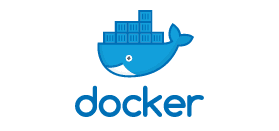Docker has revolutionized the world of containerization, making it easier than ever to package, distribute, and manage applications and their dependencies. Whether you're a beginner looking to get started with Docker or an experienced user seeking to deepen your knowledge, this comprehensive guide to Docker commands will equip you with the skills to manage containers like a pro.
1.. docker run - Spinning Up Containers:
Explanation of creating and starting containers from images.
Usage examples and options.
Tips for running interactive sessions and detached containers.
2.. docker pull - Downloading Images:
- Understanding image acquisition from container registries.
- Steps to pull images from popular repositories.
- Image versioning and best practices.
3.. docker build - Crafting Docker Images:
- A detailed look at Dockerfile and image creation.
- Building custom images and tagging them.
- Optimizing Docker image building.
4.. docker ps and docker ps -a - Managing Containers:
- Listing running and all containers, including stopped ones.
- Filtering and displaying container information.
- Container lifecycle management with docker stop, docker start, and docker restart.
5.. docker exec - Executing Commands Inside Containers:
- Running commands within running containers.
- Use cases for managing and troubleshooting containers.
- Interactive and detached execution modes.
6.. docker rm and docker rmi - Removing Containers and Images:
- How to clean up your environment by removing containers and images.
- Safely deleting containers and images while preserving data.
7.. docker images - Listing Available Images:
- Displaying all available Docker images.
- Sorting and filtering images based on criteria.
- Identifying image IDs and sizes.
8.. docker volume create and docker network create - Managing Data and Networks:
- Creating Docker volumes for data persistence.
- Setting up Docker networks for container communication.
- Real-world use cases for volumes and networks.
9.. docker-compose - Managing Multi-Container Applications:
- Introduction to Docker Compose for orchestrating multi-container applications.
- Using YAML files to define services and dependencies.
- Commands for starting, scaling, and stopping services.
10.. docker logs and docker inspect - Logging and Container Inspection:
- Viewing container logs and diagnosing issues.
- In-depth container inspection with docker inspect.
- Extracting useful information from container metadata.
11.. docker save and docker load - Image Archiving:
- Archiving and exporting Docker images.
- Importing images from tarball archives.
- Efficient image sharing with colleagues and across environments.
12.. docker login, docker push, and docker pull - Registry Interaction:
- Logging in to Docker registries for image access.
- Uploading (pushing) and downloading (pulling) images.
- Securely storing and distributing Docker images.
Conclusion:
Docker is a versatile and powerful tool for containerization, and mastering Docker commands is crucial for effective container management. With this comprehensive guide, you'll be well-equipped to handle a wide range of Docker tasks, from creating and running containers to managing images, networks, and data. Whether you're a developer, system administrator, or DevOps engineer, this knowledge will be invaluable in your journey towards containerized application deployment.



Top comments (0)